
The twin Voyager 1 and 2 spacecraft are exploring where nothing from Earth has flown before. Continuing on their more-than-45-year journey since their 1977 launches, they each are much farther away from Earth and the Sun than Pluto.

Quick Facts
Voyager 2 launched on August 20, 1977, from Cape Canaveral, Florida aboard a Titan-Centaur rocket. On September 5, Voyager 1 launched, also from Cape Canaveral aboard a Titan-Centaur rocket.
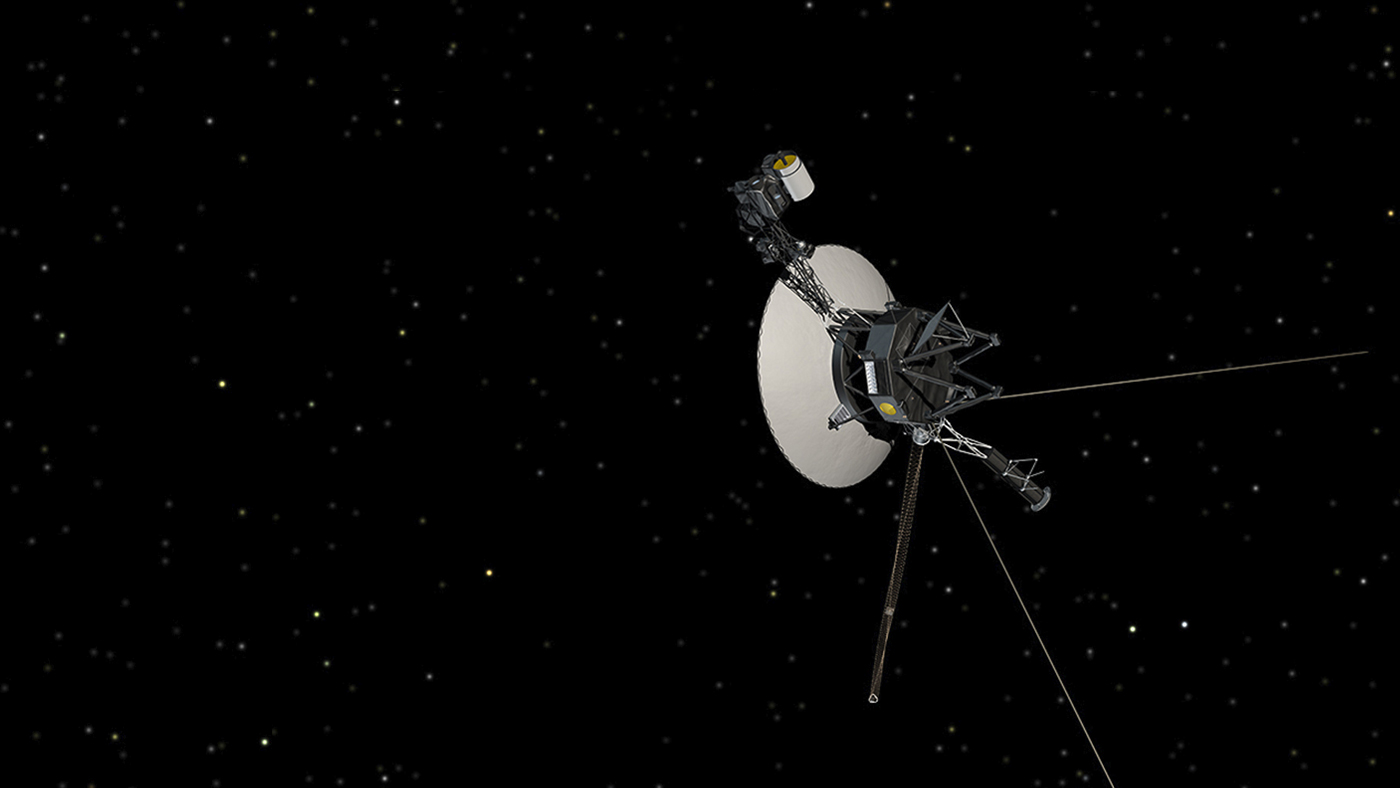
Between them, Voyager 1 and 2 explored all the giant planets of our outer solar system, Jupiter, Saturn, Uranus and Neptune; 48 of their moons; and the unique system of rings and magnetic fields those planets possess.
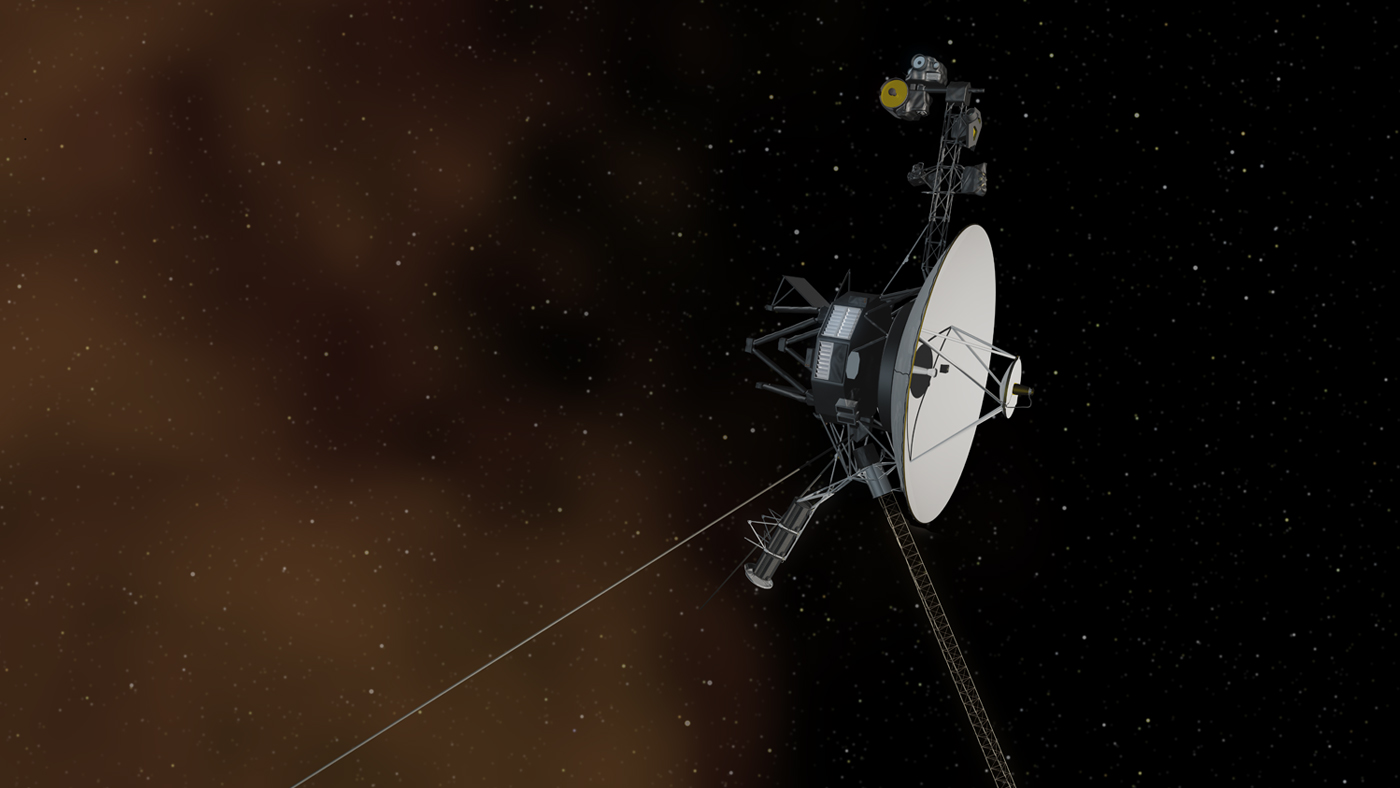
The Voyager spacecraft are the third and fourth human spacecraft to fly beyond all the planets in our solar system. Pioneers 10 and 11 preceded Voyager in outstripping the gravitational attraction of the Sun.
Voyager 1 crossed the termination shock in December 2004 at about 94 AU from the Sun while Voyager 2 crossed it in August 2007 at about 84 AU.
Both Voyager spacecrafts carry a greeting to any form of life, should that be encountered. The message is carried by a phonograph record - -a 12-inch gold-plated copper disk containing sounds and images selected to portray the diversity of life and culture on Earth.
In August 2012, Voyager 1 made the historic entry into interstellar space, the region between stars, filled with material ejected by the death of nearby stars millions of years ago. Voyager 2 entered interstellar space on November 5, 2018 and scientists hope to learn more about this region. Both spacecraft are still sending scientific information about their surroundings through the Deep Space Network, or DSN.
The primary mission was the exploration of Jupiter and Saturn. After making a string of discoveries there — such as active volcanoes on Jupiter's moon Io and intricacies of Saturn's rings — the mission was extended. Voyager 2 went on to explore Uranus and Neptune, and is still the only spacecraft to have visited those outer planets. The adventurers' current mission, the Voyager Interstellar Mission (VIM), will explore the outermost edge of the Sun's domain. And beyond.
Learn about Voyagers' mission status: where they are in the space, the time required to communicate with them, and a lot more.
Learn about the five science investigation teams, the four operating instruments on-board and the science data being returned to Earth.
The Voyager spacecraft have been exploring for decades. Dive deep into the journey with this interactive timeline.
Interact in 3D. Take a deeper look at the sophisticated systems and instruments that deliver the stunning science and images.
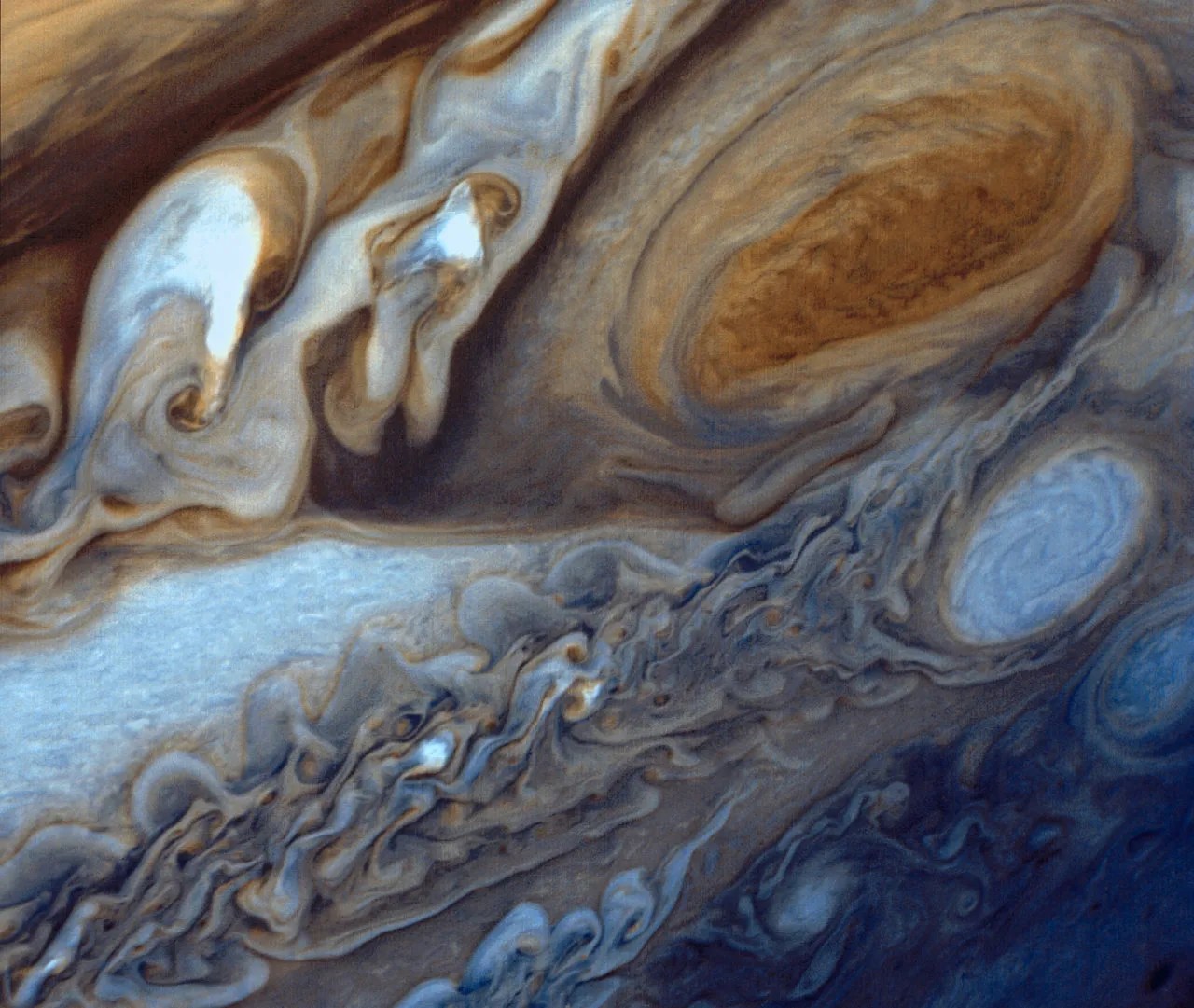
Interstellar Mission
The mission objective of the Voyager Interstellar Mission (VIM) is to extend the NASA exploration of the solar system beyond the neighborhood of the outer planets to the outer limits of the Sun's sphere of influence, and possibly beyond.
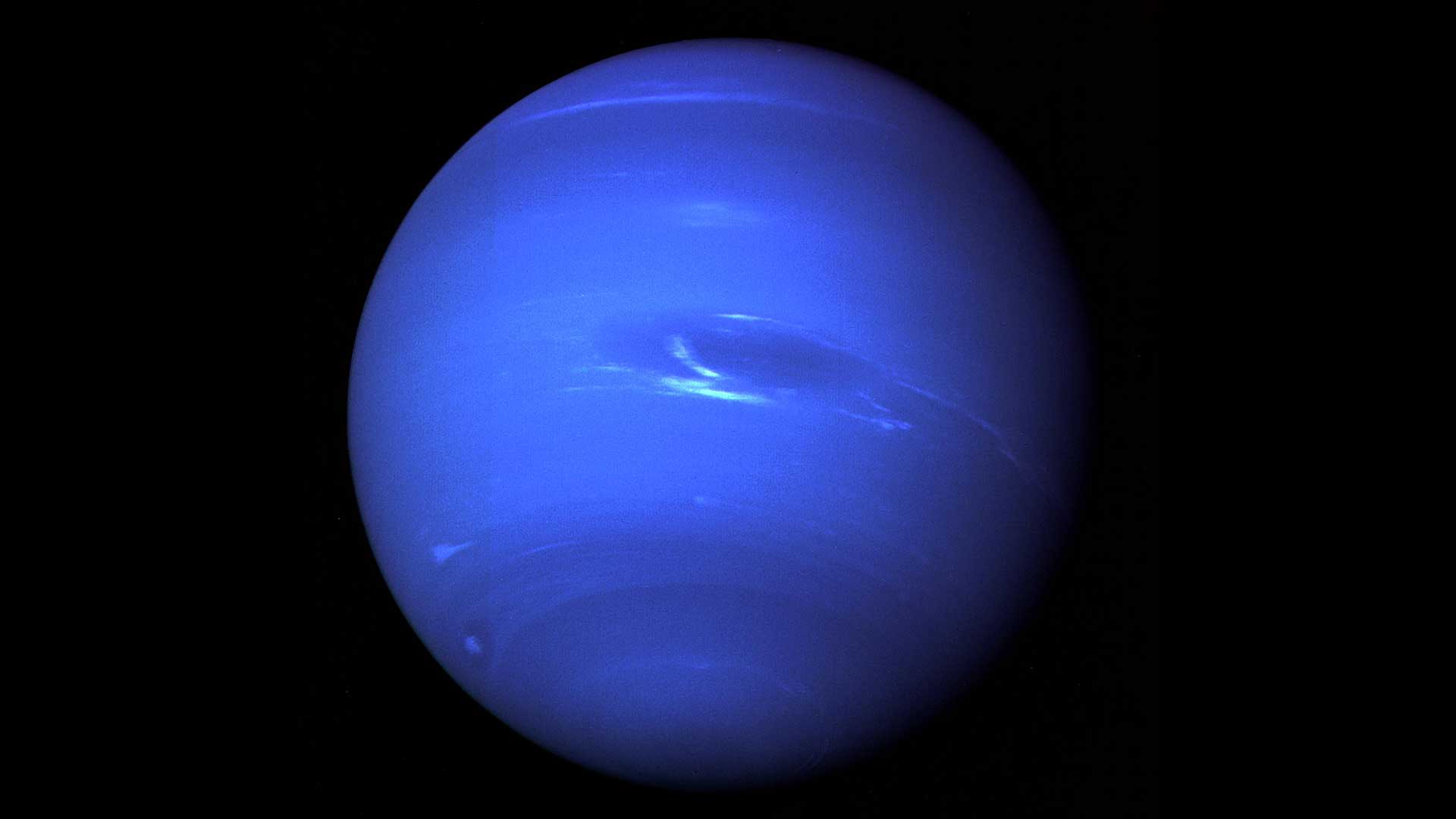
Planetary Voyage
The twin spacecraft Voyager 1 and Voyager 2 were launched by NASA in separate months in the summer of 1977 from Cape Canaveral, Florida. As originally designed, the Voyagers were to conduct closeup studies of Jupiter and Saturn, Saturn's rings, and the larger moons of the two planets.
Questions, answers and interviews that explain the Voyager mission.
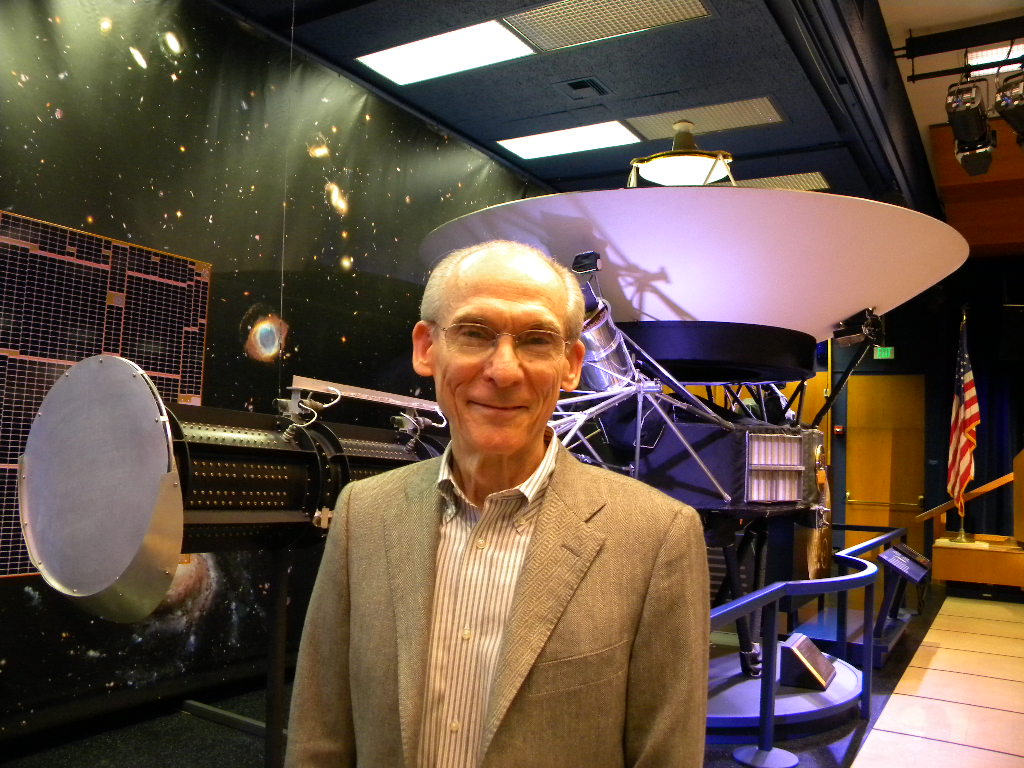
- Dictionaries home
- American English
- Collocations
- German-English
- Grammar home
- Practical English Usage
- Learn & Practise Grammar (Beta)
- Word Lists home
- My Word Lists
- Recent additions
- Resources home
- Text Checker
Definition of voyage noun from the Oxford Advanced Learner's Dictionary
- an around-the-world voyage
- a voyage in space
- The Titanic sank on its maiden voyage (= first journey) .
- (figurative) Going to college can be a voyage of self-discovery.
- Darwin’s epic voyage of exploration
- reconnaissance
- Lady Franklin kept a journal during the voyage.
- The ship completed her maiden voyage in May.
- There were mainly scientists on the voyage.
- Bering's voyage of discovery was one of many scientific expeditions in the 18th century.
- The ship began its return voyage to Europe.
- The ship was badly damaged during the voyage from Plymouth.
- They set off on their voyage around the world.
- Writing a biography can be an absorbing voyage of discovery.
- during a/the voyage
- on a/the voyage
- voyage from
- a voyage of discovery
Definitions on the go
Look up any word in the dictionary offline, anytime, anywhere with the Oxford Advanced Learner’s Dictionary app.
- 2 Other destinations
- 3.1 History
- 3.3 Climate
- 3.4 Units of measure
- 3.5 Politics
- 5.1 Entry requirements
- 5.2 By reduced-gravity aircraft
- 5.3.1 Spaceports
- 5.3.2 Spacecraft
- 5.4.1 Spaceports
- 5.4.2 Spacecraft
- 5.5 By interplanetary spacecraft
- 5.6 Space tourism companies
- 6.1 By yourself
- 6.2 By orbital spacecraft
- 6.3 By suits
- 7.2 Astronomical objects
- 12.1 Standard delicacies
- 15 Stay safe
- 16 Stay healthy
- 18.1 Electricity
- 18.2 Hygiene
- 18.3 News and entertainment
- 18.4 Religious services

Space tourism has been a dream of humanity for millennia. While in orbit or in free fall near Earth , you can float inside a spacecraft and view the planet from a unique vantage point. Though commercial space tourism has arrived, it is only for a privileged few. However, with recent innovations, it may be accessible to many soon. While very few can go to space, anyone with good eyes can see it for free. They can also do amateur astronomy , visit spaceflight sites , or learn about it.
Regions [ edit ]

Outer space or simply space is the great empty above us. The most common definition is that space begins just 100 km (62 mi) above Earth's sea level, a boundary known as the Kármán line. Above that height, tourists need space technology to get there and to survive, as even high-altitude aviation technology won't suffice. The trick with spaceflight is that it's not about going high ... it's about going fast . In low Earth orbit, that means speeds around 7.8 km/s (28,000 km/h or 17,000 mph), enough to circle the entire globe in about 90 minutes. Space is characterized by near-vacuum , with the atmosphere dwindling away to a few atoms per cubic meter in interplanetary space. As the spacecraft moves along gravity in freefall , astronauts can feel the sensation of weightlessness , or microgravity .
A further paradox of space is that it's mapped and managed in great detail, more than many places on Earth. Bygone explorers setting out into new continents or seas had little idea what lay before them or where their journey might lead, and they might be out of contact with home for years. Those heading into space have planned precise trajectories, computed to the split-second. Throughout the day. they coordinate with mission control, and in their free time, they can have audio and video calls with their families at the speed of light.
These are the destinations that most of us would ever dare dream of experiencing. Tourists may go whipping around at thousands of meters per second . Adjusting the spacecraft's speed using propellant can change its orbit, going higher or lower. Low Earth orbit region is a popular place for space stations since a relatively small amount of fuel is needed to get there. That said, every single human has been inside Earth's gravitational influence, as the furthest that anyone has traveled is to the dark side of the Moon.
Technically, the distinction between space and the upper atmosphere is arbitrary. Since the atmosphere becomes less dense as a spacecraft goes up, drag in "space" is a real issue. In fact, the International Space Station needs to get boosted once a while to prevent it from falling back to the atmosphere. The 100-km altitude is chosen because this is the hard limit on any kind of air travel, but also because it's a nice round number. So don't worry if a space tourism company carries you just shy of that distance – it is still the experience of a lifetime!
Other destinations [ edit ]

Besides these natural destinations mentioned above and staying inside a spacecraft, there are two space stations in operation as of May 2023. These are:
Understand [ edit ]
History [ edit ].
Outer space was not well understood for millennia. People believed that the atmosphere extended upwards indefinitely, and if people could rise high enough on balloons or flying contraptions, they would eventually reach the moon and the stars. Only in the 17th century, did advances in math, physics, and technology begin to reshape our understanding. Telescopes show what lay beyond our own world, such as the moons of Jupiter. Through the theory of gravity and Newtonian physics, we discovered that outer space is a vacuum and how stars, planets, and moons orbit each other.
In the 20th century, Russian teacher Konstantin Tsiolkovsky published landmark papers, and American scientist Robert Goddard experimented with rocket designs. While early 20th-century rocketry pioneers had their eyes on the stars, rockets had not yet escaped their military origins. By 1944 Germany had built the V-2, the first ballistic missile, to rain down on targets at speeds that made it invulnerable to anti-aircraft guns and fighters. The development of long-range ICBMs led to the Space Race during the Cold War – both the United States and the Soviet Union were now competing for the "firsts" in spaceflight.
Under the leadership of engineer Sergei Korolev, the Soviet Union got this first on 4 October 1957 when Sputnik 1 orbited the Earth for 21 days. On 3 November 1957, the Soviet Union succeeded in putting Laika the dog into space aboard Sputnik 2 , making her the first animal to orbit the Earth. Yuri Gagarin then became the first human to be successfully launched into space onboard Vostok 1 on 12 April 1961. Then, in 1967, reckless development resulted in fatal disasters for both programs: A fire killed all three American astronauts on board during a launch simulation of Apollo 1, and a crash killed the Soviet cosmonaut on board Soyuz 1.
The United States program then picked up its pace and peaked when Apollo 11 landed on the Moon on 20 July 1969. When Neil Armstrong and Buzz Aldrin walked on the lunar surface, it was watched live by 723 million people, more than one-fifth the population of Earth. Six more missions followed through December 1972. However, the wild dreams of the 1960s and 70s died as the public realized the cheap and easy space tourism they'd been promised wasn't forthcoming.
Satellites were starting to become accessible in the 1980s. In 1990, the Hubble Space Telescope was launched into orbit, marking great milestones in space observation. The Space Shuttle debuted in 1981, becoming the first working spaceplane. At the same time, the Russians were developing the Mir space station, and the Americans were planning out space station Freedom . Space station Freedom would then be converted to become the International Space Station . Returning to spaceflight's private sector, Dennis Tito became the first pay-to-fly space tourist in April 2001. Others soon followed suit.
China became the third country to put a person into orbit with the launch of Shenzhou 5 in October 2003. Since then, the country's space program has been expanding its presence. India in the 21st century also expanded their space exploration scope drastically. In December 2015, SpaceX's reusable Falcon 9 rocket landed on its landing site, aiming to reduce launch cost drastically. Since then, Virgin Galactic and Blue Origin sent a couple of passengers on short journeys to the edge of space in July 2021. While space remains a destination for just a few people, it's definitely more accessible as these spaceflight technologies get refined.
People [ edit ]

Most of the people to visit space so far have been astronauts or cosmonauts — professionals who are paid to train for and perform spaceflights. The distinction between the names is largely one of respect. The term "cosmonaut" is reserved for Russian astronauts. Chinese astronauts are also often called "taikonauts" after the Chinese word for "space" (太空 tàikōng ). The names are not based on nationality. For example, the first East German in space, Sigmund Jähn, is a "cosmonaut" because he rides on the Soviet Soyuz. The first West German in space, Ulf Merbold, is called an "astronaut" because he rides on the Space Shuttle.
The remaining few are called space tourists , though NASA and Roscosmos prefer the term spaceflight participant . A more careful distinction can be drawn between those from nations that don't have an astronaut program and self-funded tourists who paid their way into space.
Climate [ edit ]
Since there is no atmosphere in space, spacecraft must create one for the astronauts to survive. Therefore, the atmosphere composition can vary widely. In the past, spacecraft used pure oxygen for convenient atmosphere storage, but nowadays it matches much more like Earth. Onboard the International Space Station, the temperature can range from 18 to 26 °C (64 to 79 °F), with humidity at around 60%. Therefore, it is wise to wear a light jacket to keep your body comfortable. In a spacesuit, the climate can be controlled more easily. In that case, comfortable and tight inner clothes would be the best fit, as the suit is very stiff.
In practice, outer space doesn't have a "temperature", since there is very little matter around. These temperatures more often refer to the surface temperature, which can be misleading as an object in different orientations would receive heat from the Sun differently. Without sunlight, the temperature is around −270.5 °C (−454.9 °F), 2.7 degrees above absolute zero!
Units of measure [ edit ]
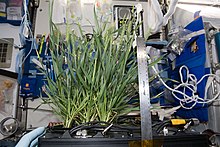
Most activities in space use the metric system because almost all countries adopt the standard. However, in the United States, many parts are manufactured in the imperial system, resulting in a mess of conversions. The most embarrassing case of these mishaps is the deorbit of the Mars Climate Orbiter in 1999, as the spacecraft interpreted the data as in metric units, even though it is in imperial units. Other countries are not immune to this either, as many space components use the imperial system, especially with diameter measures. As for a space tourist, it should not matter too much as most things are metric already.
Politics [ edit ]
The concept of politics in space is given a very futuristic name: astropolitics . The most well-known document about this is the Outer Space Treaty. In short, it recommends countries consider that space "shall be the province of all mankind". This includes fostering science development, no claim of sovereignty on planets and moons, and no mass destruction weapons in space.
A prime example of how politics affect space operations is the Mir space station. After the collapse of the Soviet Union , the space station allowed commercialization to get enough operating money. As tension between the United States and Russia is rising again due to the Russian invasion of Ukraine , space may become more militarized. For space tourists going to the International Space Station, politics should be separated from their spaceflight to prevent conflicts. The United States is the only country in the world with a space force, a branch of the military dedicated to warfare in space.
Events [ edit ]
Talk [ edit ].
Like polar bases and other multinational ventures, space travel uses the languages of the craft's operators. English is the working language of space, used for many space operations and international coordination on the ground. Russian is the secondary language, as Soyuz missions use exclusively Russian until reaching the International Space Station. Sometimes, signs and labels on the station are bilingual. Naturally, Mandarin is spoken on Chinese missions to space.
English is generally the working language in the International Space Station, though usually, crews are fluent in both English and Russian. Space tourists on the International Space Station must learn enough English. They also need to know basic Russian (250 hours of language training during 6 months of study, or about 2 hours per day).
There is a lot more jargon in spaceflight than in many other places, partly because most people are technical-minded. Here are some of the basic terms that tourists and space-interested people should be familiar with:
Get in [ edit ]
Entry requirements [ edit ].
Only the United States , Russia , and China can send people into space as of date. Nine other countries and one organization named the European Space Agency has launched objects to space using their domestic launch vehicles.
The other independent countries that have launched satellites into space and have active space programs are Japan , India , Israel , Iran , New Zealand , North Korea , South Korea , and Ukraine . However, Ukraine has never put its own satellites into orbit. The European Space Agency includes Austria , Belgium , Denmark , Finland , France , Germany , Greece , Ireland , Italy , Luxembourg , the Netherlands , Norway , Portugal , Spain , Sweden , Switzerland and the United Kingdom .
As of February 2022, nine countries are actively working on placing satellites in orbit : Brazil , Australia , Indonesia , Taiwan , Kazakhstan , South Africa , Argentina , Pakistan , and Turkey . Besides those, some countries had plans to be space-faring but are now abandoned : Canada , Egypt , and Iraq . Citizens of other countries who do not have space capabilities can fly on spacecraft built by these countries, though be wary of sanctions before booking a flight.
In the United States , space tourists must be able to withstand high acceleration, deceleration, vibration, and microgravity during spaceflight. They also must be trained to deal with emergency situations , such as smoke, fire, loss of cabin pressure, and emergency exit. The training course can last from a few days in suborbital flights to a few months in orbital flights.
Training would be much less stringent for those boarding a reduced-gravity aircraft . Almost all age groups are eligible to fly on one of these aircraft. However, those with medical conditions should consult the provider and doctors before. The tourist may also need to submit medical certificates and other measurements in some countries.
By reduced-gravity aircraft [ edit ]
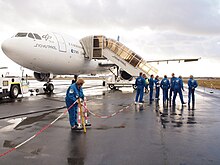
The weightlessness experienced in orbit can be created by a parabolic aircraft flight, which alternates low g -forces for about 30 seconds at the top of its arcs with high g -forces at the bottom. These parabolic flights are notoriously nausea-inducing, leading to the nickname Vomit Comet , but commercial operators claim that their shorter flights (15 parabolas) are considerably gentler than research and training flights which involve 40-80. They are also much less costly than risky than other options, though the price can be steep for some people.
- 28.615 -80.6945 1 Incredible Adventures Florida , Kennedy Space Center , Space Commerce Way, Merritt Island, Florida , United States ( go east through Florida State Road 528 and turn left at Florida State Road 3 ), ☏ +1 941 346-2603 , toll-free: +1 800 644-7382 , [email protected] . The only provider for individual reduced-gravity flights, with a general plan from Martian gravity (1/3 Earth gravity) to lunar gravity (1/6 Earth gravity) and finally to zero-g. The small Rockwell Commander 700 plane will make 10-12 maneuvers, with each maneuver lasting 10 seconds. $4500 per adult, children under 18 years old are not allowed . ( updated Feb 2022 )
By suborbital spacecraft [ edit ]

A suborbital flight can fly high into space, but not fast enough to achieve orbit. This means that the spacecraft is in space in just a few minutes, so be sure to plan everything beforehand. Price for these spaceflights are pretty steep by conventional standards, but it is certainly cheaper than an orbital spaceflight. As of 2022, there are two operators offering sub-orbital flight, consisting of Virgin Galactic's SpaceShipTwo spaceplane and Blue Origin's New Shephard rocket. There are many more companies that plan to offer such services, but they won't go online for many years.
Spaceports [ edit ]
Spacecraft [ edit ], by orbital spacecraft [ edit ].

This is the real deal . Some people will not going to accept that a tourist were "in space" until they've gone into orbit. The minimum practical height for this is 350 km; otherwise, atmospheric drag will force the spacecraft down. The price tag for a trip to this region starts at around an eye-popping US$40 million. So, it is wise to wait and invest in these companies, for them to boost the development of cheap and convenient space access. The most promising of all is Starship rocket in development, carrying 100 crews with "less than $1 million" cost per launch. Although, in practice, the price tag would still be really high for ordinary citizens.
By interplanetary spacecraft [ edit ]
Leaving the endless loop around Earth to journey elsewhere in the Solar System and beyond. Nobody has gone that far since the Apollo 17 flew the last lunar mission in 1972, nearly fifty years ago. The Artemis program plans to send a crewed spacecraft to Moon orbit in 2024; actually landing people on the Moon is not expected until the late-2020s. There are no other government-backed projects to return people to the Moon or to reach Mars, though work continues on the massive challenges such as self-sufficient habitats. Commercial or private proposals are wildly speculative.
Space tourism companies [ edit ]
Unlike airplanes, you can't just pick up the phone, call the launch sites and arrange launch schedules. You will need help from space tourism companies.
Get around [ edit ]
Most space travelers remain inside their spacecraft and use its propulsion systems to get around. As orbital mechanics is extremely unintuitive and fuel for maneuvering is quite limited, these tasks are best left to a qualified pilot and computers.
By yourself [ edit ]
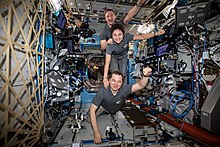
Inside your craft, it's very easily move around using your hands and feet . Craft are designed with ample handholds and footholds for moving yourself around as well as anchoring yourself in place while you're working. You're unlikely to get stuck out of reach of one, as momentum, air currents, and other minuscule movements of your craft make it difficult to remain perfectly stationary. However, tourists could be stuck for many minutes, possibly even hours of that's happens.
Whenever a person reach out for a surface , the rest of your body will move away just as much, preventing them from reaching anything. "Swimming" through the air doesn't work either, since unlike water, air offers very little mass to push against. Your best bet, other than asking for help, is to throw something reasonably heavy, such as your clothes, which will propel the person slowly in the opposite direction.
Moving things in a weightless environment is not intuitive, and doing it right takes practice and training. Sure, you can push or pull a massive object just as easily as a tiny one, but what's really happening is that you and the object are moving towards or away from each other. If you try to use a screwdriver, for example, what will actually happen is that the screw and the spacecraft it's attached to will rotate a tiny amount, while your comparatively small body rotates the rest of the way in the opposite direction — not at all what you were trying to accomplish!
What you need to do is anchor yourself to the spacecraft so you can turn the screwdriver and screw without turning the craft. On Earth, gravity holds you to the ground with the force of your whole bodyweight, but in space, you have to use muscle power to provide that force. (Imagine holding a block of wood in your hand, and trying to put a screw in it. It's much harder than trying to put a screw in a wall.) Astronauts practice in neutral buoyancy pools , large pools where objects underwater are balanced to neither float nor sink. Many tasks in space, particularly during EVAs, are performed very slowly and methodically.
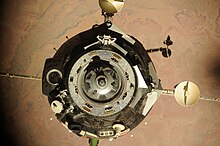
Locating yourself in space is crucial. Unlike addresses on Earth, locations in space are often refer to its orbit , i.e. path around a parent body. This is because you're constantly moving in space, interacting with planets and moons along the trajectories. Some characteristics of an orbit includes its relative position , inclination , apogee / perigee (highest/lowest point in orbit), etc. The usual units used are kilometers , astronomical unit (distance from the Earth to the Sun), and degrees respectively. In practice, that would mean using an array of telescopes to measure these data accurately. Predicting the future location of an object can be done very accurately, as engineers rely on that to push the spacecraft to the correct destination.
By suits [ edit ]
Occasionally, space travelers must do extra-vehicular activity (EVA), where they exit their craft to access scientific experiments or perform repairs. For this, you need a very rugged spacesuit , which provides breathable air and protects you from the vacuum of space, harmful radiation, and extremes of temperature (from near absolute zero in the shade to absolutely roasting in the ferocious sunlight).
While a tourist can zoom around to their heart's content inside the spacecraft, outside of it, the person can easily become stranded with no propulsion left, potentially doomed the tourist a short life until air supply runs out in a few hours. Maneuvering units with small thrusters have been used a handful of times (most recently in 1990), but the safety risk is considered too great, and the scant advantages are certainly not worth the potential trouble. Today an emergency-use one is worn on all EVAs but has never yet been used outside of tests. EVAs are always conducted tethered , and often not just tethered but firmly attached to the Canadarm2 grappling arm so your crewmates can move you around.
See [ edit ]
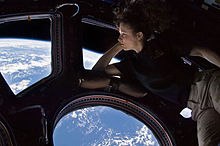
Sightseeing in space is a must – after all, isn't it attractive? There, the Earth's boundaries are visible, making quite a few space visitors experiencing a shift in their awareness, dubbed the " overview effect ". There, they become much more aware of how fragile and isolated life on Earth is compared to the vastness of the universe. In suborbital flight though, you needs to plan out everything in advance, or you would miss everything! Also for that reason, you should forget about taking pictures from a phone, as the spacecraft would likely have an array of cameras.
Earth [ edit ]
Earth is a remarkable sight, with its whorls of weather systems, blue oceans, "phases" as you pass from day to its night side, and glowing nighttime cities. If you orbit the moon, as you pass around its far side you lose radio contact as well as sight of the planet, and suddenly feel very much alone in the universe. Then you come around the corner and with relief see earthrise. You don't see this from the lunar surface without moving, as the Earth holds a nearly fixed position in the lunar sky.
- Northern and Southern Lights . Formed at the edge of space, at an altitude of a few hundred kilometers, they can seen far below you flickering across the Earth's night surface. ( updated Jun 2022 )
- Weather patterns . Unlike other planets, Earth is substantially yet partially covered by clouds. In space, the clouds don't look like moving at all, but it's enough for you to have a new cloud pattern after going around an orbit. Hurricanes and typhoons can also be seen from space, though you should bring with you a telescope to see them in all of their glory. ( updated Jun 2022 )
Astronomical objects [ edit ]
By 25 km (16 mi) altitude (well short of reaching space), all blue has drained from the sky, you're far above the weather systems, and you can see the curvature of Earth's surface. The stars become fixed points of light instead of twinkling: you'll see a rich field of them as you orbit the night side of Earth, but on the day side the glare of "earthshine" blanks out almost everything else. In low Earth orbit, sunrise and sunset flash by every 45 min; there's a brief red glow, but not the prolonged colors you see from the surface.
- Moon . In space, the Moon don't look nearly as different as on Earth. However, seeing the Moon through there is far different than seeing it in picture, as it will give you a sense of wonder and awe. Prepare to take a telescope to view the Moon in all of its glory, as there is no atmospheric distortion to worry about. ( updated Jun 2022 )
- Stars . They can be seen very clearly without the Earth's atmosphere obstructing. Have a nice view of the Milky Way, or dream about humans going to Proxima Centauri, our closest neighbor. Make sure to equip with long-exposure cameras and software to get the nicest pictures. ( updated Jun 2022 )
Do [ edit ]
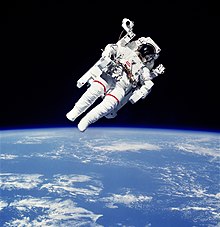
Once you're there, there are a lot of activities to do. You can do extravehicular activities (EVA), better known as space-walking, means exiting the spacecraft to float around in space. It's only realistic in orbit and beyond, as a suborbital flight is too brief. Space Adventures offer EVA, but there have been no takers yet: it costs US$20 million extra, requires an extra month of training, and has additional fitness qualifications. You can do science as well, but be sure plan this with the organizers in advance, and assume it must involve zero extra weight. At the very least, you can be the subject of medical observations. You might not need to bring a camera if the spaceship's CCTV and external imaging is comprehensive.
As a space tourist, unbounded by tight schedules, you can do a lot of fun experiments that no one has ever done before. Yusaku Maezawa, for example, is the first to play various sports inside the space station, such as frisbee and golf . Speaking of golf, it is also played on the Moon by Alan Shepard, with an "impressive" drive of 37 m (40 yd).
Learn [ edit ]
Learning in space is a bit different from Earth. Instead of sitting in a lecture hall, you will do experiments that will advance our human knowledge. After all, that's what the space stations are for: to do experiments in micro-gravity. These experiments require prior arrangements months in advance, and sometimes there isn't much that you can do to help your fellow astronauts. Though, on Earth, you can study in space-related field like astrobiology and astrophysics, with lots of fun! Gone are the days of nerds reading thick and complicated books, there are videos of explainers all over YouTube.
- Space hardware . If you want to feel more close to Earth, try observing and understanding the technologies of your spacecraft and space station. These have been designed by very smart people, with a lot of them is on the bleeding edge of our tech capabilities. ( updated Jun 2022 )
Work [ edit ]
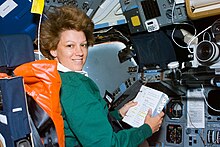
Astronauts perform many tasks as they orbit Earth. The space station is designed to be a permanent orbiting research facility, with a major purpose is to perform science and research that only a space environment can provide. The station crew spends their day working on science experiments that require their input, as well as monitoring those that are controlled from the ground. They also take part in medical experiments to determine how well their bodies are adjusting to living in space for long periods of time.
Working on the space station also means ensuring the maintenance and health of the orbiting platform. Crew members are constantly checking support systems and cleaning filters, updating computer equipment: doing many of the things homeowners must do to ensure their largest investment stays in good shape. Similarly, down on Earth, the mission center constantly monitors the space station and sends messages each day through voice or email with new instructions or plans to assist the crew members in their daily routines.
For those dreaming of working in space , look at the websites of the space agencies to see what they're hiring, and consider what skills might get you into space. Think ahead on how that job market might evolve: they'll probably need fewer pilots but more specialists. Solar panel maintenance, water extraction from Martian shale, who knows?
Buy [ edit ]

For most of us stuck down here on Earth, there are a lot of souvenirs at the space centers. Beware though that a lot of them are designed to serve the general public, which can contain science and concepts being represented inaccurately. The best way to buy real souvenirs is to have a good understanding of basic space concepts.
- 28.52403 -80.6814 1 Kennedy Space Center Space Shop , Kennedy Space Center Visitor Complex, Brevard County , Florida , United States ( go east through Florida State Road 528 and turn left at Florida State Road 3 ), ☏ +1 800 621 9826 , [email protected] . The shop has a range of products, from T-shirts to space pens. The shop also sell old mission badges, Apollo and Shuttle-themed cups and toys. They also feature unique planet cuddles, which one of them has flown into real space! Products can be bought offline in the shop, or online with shipment from FedEx and USPS. ( updated Jun 2022 )
- SpaceX store , [email protected]. . The shop primarily sell wearables, mission patches and Mars-themed souvenirs, in brand with the company's ambitions. They can only be bought online, with support for most major credit cards and Apple Pay. ( updated Jun 2022 )
- Dheespace , ☏ +9513667668 , [email protected] . A shop with ISRO (India space agency) merchandise, such as model rockets, T-shirts, etc. ( updated Jun 2022 )
Eat [ edit ]
Although space food has come a long way in terms of appeal and variety, the quality and flavor are still not up to standards of most connoisseurs of fine cuisine. Your transportation provider may offer some choice in the foods available, but you will be limited by their willingness to indulge you. Real space food has to be carefully tested to make sure it's nutritionally balanced, can be stored for months without refrigeration, and is suitable for a zero-gravity environment. Food that would leave crumbs, for example, is problematic. The menu on the International Space Station generally consists of American and Russian staples along with other meals and international cuisines that have been requested and developed.
The freeze-dried " astronaut ice cream " sometimes sold on Earth as a novelty item is a misnomer; it has never actually been served on any manned space mission, and the texture is as off-putting to astronauts as it is to everyone else. However, real ice cream has occasionally been eaten in space by astronauts aboard Skylab, the Space Shuttle, and the International Space Station (usually when frozen components for scientific experiments are being sent up and there's some space remaining).
Unfortunately, even with extensive research and development, astronauts find much food in space to be bland and often don't have much of an appetite . In zero-gravity, fluid in your body distributes evenly instead of being pulled to your feet, resulting in a permanent stuffy head that dulls your sense of smell and taste. Space travelers have typically preferred strongly-flavored and spicy foods; beef jerky is a particular favorite. (Similar but weaker phenomena can be observed with airline food, in that case due to the dry low-pressure atmosphere.) Nevertheless, you must eat to maintain energy and body mass. Among many other rules for eating in space, one is key: once you open a package of food, you must eat all of it . Leftover food will rot and become a biohazard, and there's no way to dispose of it until the next resupply mission arrives or you return to Earth.
Standard delicacies [ edit ]

Food packaged in Russian cans is generally the best quality-wise but is also the heaviest, so only a limited number of these are allowed. Most food is in plastic pouches; some of these are ready-to-eat after optionally being reheated (a variety of main and side dishes, as well as snacks like granola bars and candies) while many others are dehydrated and must be reconstituted with water (such as borscht, spaghetti with meat sauce, or cereal with powdered milk). Fresh foods like fruit are a treat sent on resupply missions; they must be eaten within two days before they spoil. While most plants grown in space have been for research, astronauts have eaten small amounts of several types of leafy greens that they have grown.
As the fixed menu repeats every 16 days on an extended stay, you'll soon grow tired of the monotony. Astronauts get personal containers in which they can select items not on the fixed menu as well as extras of favorites. Besides standard condiments (liquid salt solution, pepper oil, and ordinary fast-food packets of ketchup, mustard, mayo, etc.), astronauts bring extras like hot sauces, pesto, horseradish, and more. You can also try combining foods to make new dishes; one astronaut wrote, "I cannot think of anything that cannot be put on a tortilla, or has not been put on a tortilla."
- 55.759867 37.588278 2 Astrofood ( Russian Laboratory of Space Food ), 12 Granatnyy St., Presnensky District, Moscow , Russia ( From Vspolny Lane, go to Granatny Lane at the left ), ☏ +8 995 504 12 12 , [email protected] . M–F 10:00–19:00 . Though not true "space food", Astrofood is a great place if you want tubed food like in the past. ( updated Feb 2022 )
Drink [ edit ]
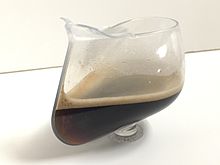
Like space food, space drinks are mainly freeze-dried and packaged in plastic pouches. Coffee, tea, and a variety of fruit drinks are available; they're drunk with a straw, and you have to be careful to always "close" the straw between sips so liquid doesn't get accidentally squirted inside the vehicle. However, recent development has made drinking on an open cup possible, using the wicking effect to flow coffee to the mouth. This requires complex modeling and prior study in space in order to nail the shape right.
Water tends to be scarce (as it is heavy and must be brought from Earth at great expense), so International Space Station machinery recycles water aggressively. Scientific wastewater, humidity, and even urine are all recovered and sanitized. Astronauts don't mind the taste of the recycled water, which is actually purer than drinking water on Earth. And as one astronaut points out, the same kind of recycling happens naturally on Earth, too, just over a much longer timescale. Contrary to popular belief, Tang was invented shortly before the United States space program, although its popularity soared when NASA used it on Mercury and Gemini missions.
Since 2015 the International Space Station has had a machine that can make fresh espresso in addition to other hot drinks. It's used with a special cup that has a narrow spout; surface tension causes water-based liquids to climb the spout, from which you can sip it like you would on Earth. However, in zero-gravity, the crema foam is distributed throughout the espresso instead of floating to the top. Carbonated beverages aren't allowed because the bubbles don't rise in zero-gravity, leading to very unpleasant "wet burps". Alcohol has been consumed on a few flights in the past (mainly by Russian crews), but are prohibited on the International Space Station as it would interfere with the environmental systems, not to mention the potential danger for fire or crew impairment.
Sleep [ edit ]

While sleeping in zero gravity may sound relaxing, the overall experience is mediocre. As usual, you're free to choose your pyjamas, provided that they aren't very loose. On the International Space Station, astronauts each have a cabin about the size of a shower stall, so this is definitely not for those with claustrophobia! Inside this, they zip themselves into a sleeping bag on the wall, which can feel weird since you have gotten used to feel a force while laying down. There is no pillows and blanket in space – astronaut Scott Kelly missed the pillow so much that he stick his bag to a cushion.
And it doesn't stop here. Maintaining your circadian rhythm is difficult on a craft that experiences a sunrise and sunset every 90 minutes, and schedule disruptions due to mission planning and long workdays create further problems. Constant noise from the station is annoying, and astronauts are often cold because of the strong ventilation, which is needed to push away the carbon dioxide they exhale and replace it with oxygen. Because of the cosmic rays are streaming through the eyes, you might occasionally see fireworks inside, which would make you missed the sleeping experience on Earth a lot! Some people are a bit luckier, since they sleep inside their spacecraft and do not need to deal with the noises.
Stay safe [ edit ]
If you obtain a legitimate ticket to orbit, you will still need to pass through very intensive training and face with a real risk of dying. There are less demanding ways of experiencing space, such as sub-orbital flights and parabolic aircraft flight.
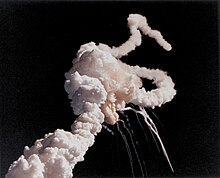
While more mature technology has made it safer than it was in the 1960s, space remains an inherently dangerous environment to put yourself in. Cosmic radiation, extreme temperatures, micrometeorites, engineering mistakes, high speeds, explosive fuels, space debris, the distance to the ground, and the lack of atmosphere make any unplanned situation potentially life-threatening. Spacecraft launch testing is extremely expensive, so spacecraft don't and can't have thousands of flight hours. By the standards of aviation, every space flight is a test flight.
Both launch (our only method of getting to space is to sit on a huge fuel-filled container and hope it behaves like a rocket and not a bomb) and reentry (if you hit it in the wrong angle you burn up in or bounce off the atmosphere) have thus far proven to be the biggest dangers during a mission. So far most accidents have been during launch and reentry as well as during training and testing; only three humans have died in space (albeit during preparations for reentry), but there have been several close calls such as Apollo 13 or the very first spacewalk. Some of the technological problems and close calls only became known to the public decades after they happened, so there may still be dangers you won't even know you're facing.
Voyagers should be wary of purchasing space flights on projects that haven't yet begun. Many ventures are highly speculative; PanAm's “First Moon Flights” Club issued over 93,000 waiting list spots between 1968-1971 and predicted launch dates for many subsequent commercial expeditions have slipped just as dramatically. If there are complications with the project or the company goes under, you might lose your money and your plans. Just look at the bold predictions of some private space companies that have already proven to be less permanent than a shooting star.
Don't even attempt to commit anything that could be interpreted as a crime in space, as the law around space crime is fuzzy and undeveloped. There has been at least one instance that an International Space Station astronaut got involved in legal trouble, causing headaches to lawyers and such. Usually, the suspect would generally be tried by the nation they're a citizen of.
Stay healthy [ edit ]

Astronaut training is physically demanding , so good physical fitness is a good starting point. Similar physical and mental stresses are present in particularly demanding types of military service, piloting fighter aircraft, mountain climbing, Antarctic expeditions, and advanced scuba diving such as cave diving. National astronaut programs often require athlete-like physical fitness and experience from these or comparable tasks. There are no hospitals in space and rescue is difficult or impossible, so people with conditions that might require immediate medical treatment are not qualified for space travel.
Although early astronauts hid the truth to protect their tough-guy image, we now know that about half of all travelers experience space sickness , a condition related to motion sickness with similar symptoms including vomiting and vertigo. Most people adapt within 3 days, and medicinal anti-nausea patches help with the symptoms.
You need to exercise to stay healthy in zero gravity. Even so, you'll still lose both bone and muscle mass. Astronauts on extended stays are required to exercise at least 2.5 hours every single day. While exercise helps diminish the problem somewhat, a long stay will still see you weakened, and several cosmonauts and astronauts had difficulty getting out of their capsule and onto their own feet upon landing.
Another concern is cosmic radiation . While you're exposed to a certain level of background radiation at all times, it gets higher in certain areas on earth and once you leave the protective layers of the atmosphere. This is already notable on a commercial transatlantic flight at 10,000 m, and only gets worse if you go up to the International Space Station at 400 km above the Earth's surface. While the International Space Station still enjoys some limited protection against radiation, once you go well beyond that height, or even to the moon, there are short term and long term risks associated with radiation that only get worse the longer you stay. Particularly dangerous are solar storms that may give you a year's worth of radiation in just a couple of hours. Shielding against radiation is also one of the major problems in ever sending humans to Mars, as all known solutions involve huge amounts of extra weight for the spacecraft or too high a risk to the crew.
Connect [ edit ]

In the past, communications are usually very low bandwidth, with flight data and audio transmitted by low-gain antennas. Higher data rate is now available, thankfully, and now astronauts can stream movies in space. A very common activity of astronauts in the International Space Station is to talk with their relatives at homes, as this would boost their morale. Keep in mind that the data speed can be very variable depending on priorities and time of the day, so usually communications from Earth to space can be poorer than the usual high-bandwidth cellular and WiFi. In the near future, satellite constellations like Starlink may provide gigabit speed to the spacecraft, via laser communications. It is possible to send small objects like physical mails and souvenirs between International Space Station expeditions, though you must have black hole-deep pocket to afford such long trips.
An astronaut has been able to dial 911 from the International Space Station, but this is not recommended as they probably cannot help you. Instead, refer to your instructions by the contractor when there is an emergency. You should never try to fix a problem alone in space – there are an army of people on the ground that will instruct on what to do. Though, if there is such the need there is an official listing of radio frequencies to contact people from the ground using Kenwood D710E and Kenwood D710GA radios. Call sign is either RS0ISS for Russian; NA1SS for American; DP0ISS , OR4ISS , IR0ISS for European; and RS0ISS-11 , RS0ISS-1 for packets.
- 145.80 MHz : voice and slow scan television (SSTV)
- 145.825 MHz : packet communications in the very high frequency range
- 437.550 MHz : packet communications in the ultra high frequency range
- 437.80 MHz : repeater
For the opposite, it is possible to communicate to the International Space Station, but some events require prior applications.
- 144.49 MHz : voice for the Americas, and the Pacific and Southern Asia (ITU Regions 2 and 3)
- 145.20 MHz : voice for the Europe, Russia and Africa (ITU Regions 1)
- 145.99 MHz and 67 Hz squelch tone (PL): repeater
Cope [ edit ]
Electricity [ edit ].
Electrical systems in space are vastly different compared to Earth. This is because space stations are international projects, which need to reach a compromise for all countries involved. On the International Space Station, electricity is provided by solar panels and batteries, distributed across many plugs designed by various standards. Roughly speaking, the United States side uses 120V DC, and the Russia side uses 28V DC, so don't plug in normal equipment directly, even with an adapter . Instead, use an inverter box provided on the station. However, most equipment are hardwired to the power system and don't use plugs. For you, space tourists, you should contact your contractors or government employers for further information.
Hygiene [ edit ]

Some toilets in space come in different shapes, but they usually operate on similar principles. They generally have a funnel-like receptacle for urine and a larger bowl for solid waste, both using suction to capture the material and any odors. You have to hold on or strap in, of course, and there are procedures to follow for operating the toilet and cleaning up afterwards. The degree of privacy depends on the craft; stations have enclosed cabins as did the Space Shuttle, but in smaller craft it may be merely tucked away in a corner, hidden behind a curtain, or is in the open and you have to ask your fellow passengers to face the other way. On short missions, many astronauts prefer to simply avoid using the toilet, relying on enemas before launch and low-fiber diets.
Clothes in space actually don't get dirty very quickly, due to a variety of environmental factors. Wearing the same underwear 3-4 days in a row is no big deal! However, there's no practical way to wash clothes in space; astronauts get fresh clothes from resupply missions, and the dirty ones are either is incinerated by sending it into Earth's atmosphere, or recovered during the trip back home.
Although a shower was tested on Skylab with mixed feedback from astronauts, it was large and cumbersome, and hasn't been used again. Astronauts take sponge baths using liquid soap, water, and shampoo provided in bags. Washing of hands and cutlery is similarly done with napkins and washcloths. Brushing your teeth in space is very similar to back on Earth. However, after you're done, you must swallow the paste because there is no water sinks. An alternative method is neatly spit the paste onto a disposable tissue, which will get burnt in the atmosphere as trash.
News and entertainment [ edit ]
Mental health in space is paramount. You're stuck with a small number of people in very cramped quarters for weeks at a time, or months for permanent crew on the International Space Station. While short missions may be different, astronauts on the International Space Station do get weekends and a few holidays off. They have a projector for watching select TV shows and movies (sometimes before they play in theaters), and laptops for surfing the internet and talking to family. They bring their favorite hobbies with them, and the International Space Station now has an assortment of musical instruments on board.
Religious services [ edit ]

Although sticking to the traditional rituals and schedules can be difficult, religion has been actively practiced in space:
- Christians have celebrated Communion in space, including Buzz Aldrin from the surface of the Moon during Apollo 11 and several astronauts on the International Space Station. Christmas is celebrated every year on the International Space Station, which includes a small artificial Christmas tree, Christmas dinner, and sometimes presents for the crew. Sometimes, Christmas is celebrated more than once, due to differences between the Julian calendar used by the Russian Orthodox Church and the Gregorian calendar.
- Islam has been practiced in space and there are guidelines for how to pray in space, which address kneeling, facing Mecca, and washing. The religion also instruct how to time prayers and fasts for a 24-hour day when experiencing a sunrise and sunset every 90 minutes, which also generally based on the point of departure from land. It may be difficult or impossible to verify whether food is halal , in which case one should eat just enough to ward off hunger. There is a fatwa forbidding devout Muslims from participating in one-way missions to Mars, as the risk to life is considered too great.
- Judaism has also been practiced in space, and there are similar guidelines for observing Shabbat, based on the point of departure from land, and orienting oneself while praying. Some adaptations may be needed to affix a mezuzah or wear a prayer shawl. Keeping kosher is possible with appropriate selection of meals, and there is already personal time allocated in schedules which could be used to study the Torah. However, properly observing tzniut (modesty) in mixed-gender crews might be impossible as that would require separate showers and toilets for men and women, which no vessel has. The danger to one's life should also be weighed carefully.
No matter your religion, if in doubt of the rules, check with an appropriate religious authority. If possible, do so several months or years in advance so leaders have enough time to consider the implications and determine the answers.
Go next [ edit ]

What goes up must come down—at least for now. Once you've exhausted the Moon , there are countless opportunities for exploration and discovery down on Earth .
- Has custom banner
- Has mapframe
- Maps with non-default size
- Has map markers
- Go listing with no coordinates
- Listing with Wikipedia link but not Wikidata link
- See listing with no coordinates
- Buy listing with no coordinates
- Sleep listing with no coordinates
- Guide topics
- Guide articles
- Travel topics
- Topic articles
- Articles with Wikipedia links related to but different to article
- Pages with maps
Navigation menu

Definition of 'voyage'

Video: pronunciation of voyage

voyage in American English
Voyage in british english, examples of 'voyage' in a sentence voyage, trends of voyage.
View usage over: Since Exist Last 10 years Last 50 years Last 100 years Last 300 years

In other languages voyage
- American English : voyage / ˈvɔɪɪdʒ /
- Brazilian Portuguese : viagem
- Chinese : 航程
- European Spanish : travesía
- French : voyage
- German : Reise
- Italian : viaggio in nave, nello spazio
- Japanese : 旅
- Korean : 긴 여행
- European Portuguese : viagem
- Spanish : travesía
- Thai : การเดินทาง
Browse alphabetically voyage
- voyage charter
- All ENGLISH words that begin with 'V'
Related terms of voyage
- maiden voyage
- ocean voyage
- View more related words
Quick word challenge
Quiz Review
Score: 0 / 5
Wordle Helper

Scrabble Tools


A Look At NASA's Groundbreaking Voyager 1 Mission - And Where The Probe Is Heading Next
A gencies such as NASA are responsible for giving us a more detailed picture of space, literally in the case of technology such as the Hubble Space Telescope and the James Webb Space Telescope (utilizing the tiniest SSDs ). The latter is currently orbiting the Sun one million miles from us, a fascinating case study in the way that we can bring the distant reaches of space (realms it's entirely unsafe and impractical for humans to venture to directly) to us.
Drones and similar machines, capable of exploring the most inhospitable environments imaginable, have been key to this. Humans have never been more than 248,655 miles into space (a feat achieved by Apollo 13 in 1970 on its journey 'around' the moon), but Voyager 1 has boldly gone far, far, far beyond that, offering us a privileged and unprecedented insight into the universe beyond our own.
This piece will explore the beginnings of the Voyager 1 project, its objectives, and how the mission has unfolded to date. It's also important to look at the future of Voyager 1 and where it's scheduled to go next.
Read more: 5 Of The Best Bug-Busting Gadgets To Keep Pests Out Of Your Home
The Concept Of Voyager 1
Jupiter and Saturn, the fifth- and sixth-furthest planets from the Sun, are approximately 601 million miles and one billion miles from the Earth respectively, at the furthest point in the planets' orbits. At their closest, these numbers shrink to a still-ludicrous 365 million miles and 746 million miles from our planet. With these being insurmountable journeys for even the most dedicated scientists, then, NASA needed an alternative way to get a closer look at these two gas giants.
Voyager 1, which set off on its journey on September 5, 1977, was designed with just that primary objective in mind: to reach both planets. A voyager in the truest sense of the word, it would gather remarkable information about those planets (and much more besides), and continue to provide such data for decades.
Voyager 1 was launched second, after Voyager 2, and is structurally just the same. The body of both probes consists largely of a 12-foot radio transmitter, and though they might look like rather humble craft, measuring at 28.2 feet long , these revolutionary probes have done some extraordinary work. Here's how it reached the first stop on its originally-planned adventure, Jupiter, and what it was able to learn on doing so.
When Voyager 1 Reached Jupiter
Monstrously large and difficult to miss as Jupiter may be, it wasn't until Voyager 1 that scientists were given an opportunity to study it up close and in painstaking detail, marking technological strides beyond Pioneer 10 and 11's own journeys earlier in the decade. The sheer length of the journey from Earth meant that it took the probe, capable of reaching speeds of more than 38,000 mph , almost a year and a half after launch to get within range to begin documenting the planet-gobbling gas giant .
From January to April 1979, Voyager's suite of scientific tools amassed readings about the planet as it passed by, and the snap-happy spacecraft collected around 19,000 images of it in the process. This bounty provided researchers a wealth of new information about Jupiter's composition, movement, atmosphere, and more.
A previously-unseen ring, rather less prominent than those sported by Saturn, was noted, theorized to have resulted from detritus left behind by numerous meteor impacts. The immense Great Red Spot, under the closest and most sophisticated watch in history, could be observed in terms of its impact on the wider planet's atmosphere, where winds swirl between and around each other.
A NASA statement, according to Space , concluded that "possibly the most stunning of Voyager 1's discoveries was that Io has extremely active volcanoes," a unique feature in the solar system that results from the constant pressure of the moon's orbit of the planet. Even more revelations awaited when Voyager 1 reached Saturn.
Voyager 1's Study Of Saturn
It's no short hop from Jupiter to Saturn. In fact, it's a hop of around 403.3 million miles . This part of the journey, from the beginning of its Jupiter adventure to the beginning of its Saturn one, took around a year and a half to complete: It came into range of Saturn in August of 1980.
Voyager 1 noted some interesting similarities between the two gas giants. Truly monstrous storms raged here too, with the volatile and hydrogen-heavy conditions supporting winds of 1,100 mph . Voyager 1's in-depth case study provided a new understanding of the makeup of the planet, allowing science to look at even its most previously-well-documented elements anew.
Saturn, of course, is also ringed, a fact that makes its composition so iconic. What we did not know until the probe provided evidence, however, is that what we see isn't just one thick ring, but a complex structure of smaller rings (dubbed ringlets by NASA ), in layers.
Besides the two planets themselves, Voyager 1 had a particular interest in Saturn's moon Titan. From August to November 1980, this moon was also monitored by the probe, its atmosphere and relationship with Saturn investigated using ultraviolet and other technologies. With that, Voyager 1 had completed the journey it was primarily designed for, and an astonishing journey it was. The spacecraft was far from finished, however, as there were much further reaches yet to explore.
The Voyagers' Journey Beyond Saturn
Voyager 1 still had a surprising amount left in the metaphorical tank after its study of Saturn ended. The even-more-distant Uranus and Neptune didn't get the fly-by treatment as Jupiter and Saturn did, due to the logistics of the course it took to get the best look possible at Titan, but it passed by them nonetheless, and further still.
Its twin, Voyager 2, would investigate Uranus and Neptune more closely, discovering 11 new moons of the former up to February 1986 and observing Neptune three years later. Maintaining functionality of the spacecraft's instrumentation this far away required some complex work to keep NASA communication technology up to the task, but the work was a remarkable feat of human ingenuity. February 1998 marked an astonishing record for Voyager 1: still speeding away, it became the furthest-reaching man-made object ever.
It remained so, and continues to, with Guinness World Records officially declaring it to be the Most Remote Human-Made Object in October 2022. At the time, it was 23.631 billion km from Earth. In fact, it's so distant that it comes somewhat closer and further from the planet as Earth orbits the Sun. Let's see where it's been on its great odyssey out of the Solar System, and where it may be heading.
The Most Incredible Leg Of Voyager 1's Journey, And Where It's Going Next
Having wrapped up its investigation of Saturn, it may have just become floating space junk, but that's far from the truth. In 2012, it exited the Heliosphere, essentially the area under the influence of the Sun's strongest magnetic field. As of that August, then, it has been passing through space outside of the Solar System itself, another first in human history.
As of February 6, 2024, NASA reports that Voyager 1, more than 46 years into its journey, is approximately 15,148,155,240 miles from us. Voyager 2, meanwhile, is a little behind at 12,677,967,494 miles. Both, however, are in the unprecedented territory of interstellar space. The Plasma Wave Subsystem, Low-Energy Charged Particles, Cosmic Ray Subsystem, and Magnetometer for both probes are still functional (as is Voyager 2's Plasma Science system), meaning that although their ultraviolet and radio functionalities are among the systems to have been deactivated to maintain fuel, they're still transmitting some information back to the planet.
NASA suggests that Voyager 1 will reach the beginnings of the Oort Cloud, an icy Solar System 'shell' half the distance to Alpha Centauri, in approximately 300 years. From there, it's on course towards a constellation called Ophiuchus. I How much longer its radioisotope thermoelectric generators will last remains a mystery, but Voyager 1 and 2 have had quite the extraordinary and pioneering journey to date.
Read the original article on SlashGear .
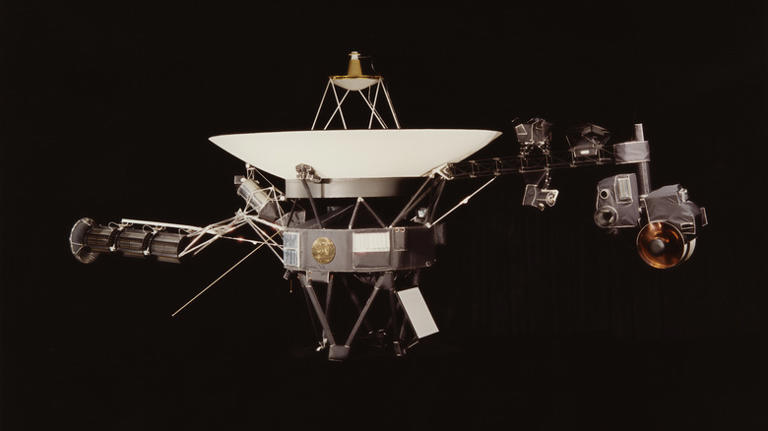
- Skip to main content
- Keyboard shortcuts for audio player

Solar eclipse 2024: Follow the path of totality
Solar eclipse myths and rumors bubble up, from radiation to food poisoning.
Bill Chappell

People visit a NASA information booth to grab solar eclipse glasses in Russellville, Arkansas. The space agency has debunked a number of myths about the total solar eclipse — including ideas about food going bad, or unborn babies being harmed. Mario Tama/Getty Images hide caption
People visit a NASA information booth to grab solar eclipse glasses in Russellville, Arkansas. The space agency has debunked a number of myths about the total solar eclipse — including ideas about food going bad, or unborn babies being harmed.
Will a solar eclipse harm a pregnant woman's baby if she looks at it? Does an eclipse emit special radiation that can instantly blind you?
Those are some of the ideas people have been asking about — and that experts have been pooh-poohing — as people in North America anticipated seeing a total eclipse, from Mazatlán to Montreal.

Here's what time the eclipse will be visible in your region
Monday's total solar eclipse begins over Mexico's Pacific Coast at around 11:07 a.m. PT, moving east through Texas and up to Maine, finally leaving the continent on Newfoundland's Atlantic coast.
Solar eclipses have long triggered fanciful explanations and warnings, from religious mythology to modern-day superstition. In recent days, for instance, a message circulated online warning people to turn off their cellphones and other devices before midnight ahead of the eclipse, warning of powerful radiation and cosmic rays.
In reality, a solar eclipse brings a temporary sharp drop in solar radiation — an event that ham radio operators have been eagerly anticipating for months, with competitions and experiments looking to fill the Earth's suddenly radiation-free ionosphere with radio signals.
Persistent but unfounded beliefs even prompted NASA to devote a special page to debunking misconceptions about a solar eclipse.
Total eclipses don't produce rays that cause blindness, NASA says
During totality, electromagnetic radiation from the sun's corona will not harm you. In fact, the only time it's safe to look at the sun without eye protection, as the sun's brightness is fully obscured by the moon and its corona is visible.
But outside of totality, your eyes can be harmed during an eclipse. If the sun is only partially obscured, looking at it will damage your retina. You can look if you have special solar glasses, but don't count on those to protect you if you want to use a telescope or camera lens that doesn't have a solar filter.
As NASA says , "the concentrated solar rays will burn through the filter and cause serious eye injury."
Another thing to remember: Take breaks if you're using a special filter to look at the sun before or after totality. As the space agency says , the sun's infrared radiation can make you uncomfortable, "as it literally warms the eye."
You should look away from the sun periodically, or use an indirect viewer like a pinhole projector to track the eclipse.
More things NASA says are NOT true about a total solar eclipse
Myth: if you are pregnant you should not watch an eclipse because it can harm your baby..
Another notion that seems to be rooted in concern about radiation. To put people's mind at ease, NASA employs a sort of "you're already soaking in it" example, citing the neutrino particles produced by the sun's nuclear fusion:
"Every second, your body is pelted by trillions of these neutrinos no matter if the sun is above or below the horizon. The only consequence is that every few minutes a few atoms in your body are transmuted into a different isotope by absorbing a neutrino. This is an entirely harmless effect and would not harm you, or if you are pregnant, the developing fetus."
MYTH: Eclipses will poison any food that is prepared during the event.
NASA gives a hypothetical: What if some bad potato salad makes people sick during an eclipse? Food poisoning is very common — and it shouldn't be blamed on a rare celestial event, the agency notes.
"The basic idea is that total solar eclipses are terrifying and their ghostly green coronae look frightening, so it is natural to want to make up fearful stories about them and look for coincidences among events around you."
Other myths have to do with omens and major events
Here are four that NASA singles out for debunking:
MYTH: Eclipses are harbingers of something very bad about to happen.
Myth: solar eclipses foretell major life changes and events about to happen., myth: solar eclipses are a sign of an exceptional celestial event taking place in time and space., myth: solar eclipses six months after your birthday, or on your birthday, are a sign of impending bad health..
NASA ascribes many of these ideas to astrological forecasts being propped up by confirmation bias.
As the agency says, "We tend to remember all the occasions when two things happened together, but forget all of the other times when they did not."
Other myths — such as the idea that the moon turns black during an eclipse, or that the Earth's two poles don't see eclipses — are simply false, the agency says.
Eclipses have deep spiritual meanings
Ideas about an eclipse's potentially powerful effects aren't new. In fact, solar eclipses do also cause some unusual things to happen .

Want to see how a solar eclipse alters colors? Wear red and green on Monday
People in totality can expect to feel a sudden drop in temperature, for instance. Stars and planets become visible in the middle of the day, and humans can experience a range of odd visual effects — from the sharpness of shadows to the movement of "shadow bands" and a change in how we perceive color.
Then there's the eerie effect of the eclipse moving from west to east, adding to the perception that time isn't moving in its normal path.
Many cultures and religions link eclipses to energy, seeing them as events of renewal and promise — or in some cases, of vital energy being drained away.
For the Ojibwe and other Indigenous peoples in the Great Lakes region, a story about a solar eclipse centers on a boy and his sister who trap the sun after it burns him.
In many folktales, magical animals try to eat the sun or the moon. In Hindu mythology, a serpent god, Rahu Ketu, wanted to eat the sun — but then his head was cut off. That created two new entities, Rahu and Ketu, according to the Folklife Today blog from the Library of Congress.
"These are the deities of eclipses and comets. Rahu is fixated on eating the sun and the moon, and will try to catch them and gobble them up," the blog notes. "Fortunately he only succeeds once in a while. Since his head was cut off, the sun or moon just falls out the hole where his neck used to be. This is an eclipse."
As Folklife Today notes, in many cultures, humans take up the duty of ending an eclipse, often by making noise and beating on drums or gongs to dispel the spirit that's attempting to take the sun.
- More from M-W
- To save this word, you'll need to log in. Log In
Definition of voyage
(Entry 1 of 2)
Definition of voyage (Entry 2 of 2)
intransitive verb
transitive verb
- peregrinate
Examples of voyage in a Sentence
These examples are programmatically compiled from various online sources to illustrate current usage of the word 'voyage.' Any opinions expressed in the examples do not represent those of Merriam-Webster or its editors. Send us feedback about these examples.
Word History
Middle English viage, veyage , from Anglo-French veiage , from Late Latin viaticum , from Latin, traveling money, from neuter of viaticus of a journey, from via way — more at way
14th century, in the meaning defined at sense 1
15th century, in the meaning defined at intransitive sense
Phrases Containing voyage
Dictionary entries near voyage.
vox populi vox Dei
voyage charter party
Cite this Entry
“Voyage.” Merriam-Webster.com Dictionary , Merriam-Webster, https://www.merriam-webster.com/dictionary/voyage. Accessed 12 Apr. 2024.
Kids Definition
Kids definition of voyage.
Kids Definition of voyage (Entry 2 of 2)
More from Merriam-Webster on voyage
Nglish: Translation of voyage for Spanish Speakers
Britannica English: Translation of voyage for Arabic Speakers
Subscribe to America's largest dictionary and get thousands more definitions and advanced search—ad free!

Can you solve 4 words at once?
Word of the day.
See Definitions and Examples »
Get Word of the Day daily email!
Popular in Grammar & Usage
Your vs. you're: how to use them correctly, every letter is silent, sometimes: a-z list of examples, more commonly mispronounced words, how to use em dashes (—), en dashes (–) , and hyphens (-), absent letters that are heard anyway, popular in wordplay, the words of the week - apr. 12, 10 scrabble words without any vowels, 12 more bird names that sound like insults (and sometimes are), 8 uncommon words related to love, 9 superb owl words, games & quizzes.

- Daily Crossword
- Word Puzzle
- Word Finder
- Word of the Day
- Synonym of the Day
- Word of the Year
- Language stories
- All featured
- Gender and sexuality
- All pop culture
- Grammar Coach ™
- Writing hub
- Grammar essentials
- Commonly confused
- All writing tips
- Pop culture
- Writing tips
- space travel
spaceflight of manned vehicles.
Words Nearby space travel
- space station
- Space Telescope
- space tourism
- space writer
Dictionary.com Unabridged Based on the Random House Unabridged Dictionary, © Random House, Inc. 2024
How to use space travel in a sentence
Bezos’s focus on space travel and climate change could have the same lasting impact, Alberg said.
SpaceX, too, seemed to solidify its standing within the space industry, graduating from the status of an upstart rocket company founded by Elon Musk to a significant NASA partner, heightening popular and business interests in commercial space travel .
Musk, fielding a series of mostly softball questions, used the session to “talk to his base” on topics ranging from space travel , colonies on Mars, crypto, AI and Covid-19 vaccines.
To illustrate his continuing presidential commitment to space travel , he’ll change the name of Mar-a-Lago to Mars-a-Lago.
It was a landmark achievement for the company that aimed to show rockets could be deployed and reused, demonstrating the viability of a new era of space travel with the ultimate goal of flying humans to Mars.
space travel “A rocket will never be able to leave the Earth's atmosphere,” The New York Times wrote in 1936.
space travel is too cheap and sol-type solar systems too numerous to justify the settlement of hostile worlds.
space travel must still be new, even if it has thirty years under its belt.
space travel would have gotten nowhere without durilium, Kennon reflected.
- Share full article
Advertisement
Supported by
Pamela Paul
A Moment of Unity, on Earth as in Space

By Pamela Paul
Opinion Columnist
Maybe it takes an extraterrestrial event to bring this shredded country together. For a phenomenon that traversed the country from the contentious southern border to the far reaches of New England, Monday’s eclipse attracted remarkably few conspiracy theories or accusations. From where I stood, in Buffalo, the major threat to the moment was a forecast of heavy clouds.
Bring on the ominous metaphors: We don’t have the foggiest idea where we’re going. This year, the eclipse passes America by. Here comes the rain again.
Perhaps I was too primed to seek meaning, having found unexpected significance in the last major eclipse to cross the country, back on Aug. 21, 2017. I needed it.
Wearied by the chaotic churn of Donald Trump’s presidency and desperate for a vacation, I told my family I wanted to see something in this country Trump couldn’t bash, alter, destroy or tarnish. I wanted mountains, rock structures, landscapes and vistas that would give me that sense of This Too Shall Pass and the planet would still be around. We decided to spend 10 days in South Dakota, starting at Mount Rushmore and ending in the Badlands.
I didn’t realize that amid all that permanence, the most fleeting vision would be the most profound. This wasn’t in South Dakota at all; it was a half-day’s drive away in Wyoming.
We set out in the early morning on what became clear was a pilgrimage route to the zone of totality . Highways that were as empty as the prairie during the preceding days were teeming with cars ; gas stations had turned into community pit stops selling all manner of eclipse-branded gear and keepsakes. Eclipse Beef Jerky in Lights Out Original flavor, anyone? People had parked at random intervals along the highway, tailgating at a galactic game.
I racked my brain to figure out why our destination, Casper, Wyo., was so familiar — which author’s birthplace, what landmark? — before realizing we were headed to the deep-red hometown of former Vice President Dick Cheney.
But the main street of Casper felt more like a global village . More than a million visitors had crowded into the state, a good number of whom descended on a town with a population of roughly 58,000. The main drag had been cleared of cars for the Wyoming Eclipse Festival . A giant map was posted across a stretch of wall, with pins available for visitors to signal their place of origin. The U.S. was dotted with pins like a holly in full bloom. No space left to mark anywhere close to New York. But the map of Europe was similarly crowded; people had also traveled from Japan and Patagonia and South Africa.
As the moon moved across the sun, a strange banana-yellow cast fell over everything, unlike any natural light I’d ever seen — closer to sepia than twilight. My three kids, then between the ages of 8 and 12, gaped at the way the light struck their hands and morphed the colors of their shirts.
“It’s a once in a lifetime experience,” my youngest mused aloud, wandering solo into a field in the park where we’d camped out, a short walk from downtown. My older kids seemed almost spooked, waving their arms in the sun’s peculiar glow.
Everyone went silent as the sun disappeared. The temperature noticeably dipped. Birds seemed to go quiet . At 11:42, the moment of totality, with the sun at one with the moon, a palpable unity in the hush down here on Earth. Then there was an audible burst of exaltation .
Some people say an eclipse brings on a sense of insignificance and solitude in the grand scheme of the universe. I had a slightly different reaction, more of a communal alignment with nature. For this atheist, it was the closest thing to a religious experience, a kind of monolith moment. Here we were, just a bunch of primates, seemingly so advanced in intelligence and power yet awed in the face of the profound.
In search of that same rare feeling, I set out this year for Buffalo . Like many an umbraphile, I booked train tickets the day they went on sale. The rest of my family dropped out when the forecast went grim, but for me, the slightest chance of experiencing totality was worth the risk.
In the early afternoon, I parked myself in the Buffalo and Erie County Naval & Military Park, chosen for its proximity to the centerline of totality and for the clear views along the Buffalo River. Food trucks lined up by crowds of families in lawn chairs. People helped one another with their tripods; a roll of duct tape was passed around to fasten the cameras.
By 2:02, a few spots of blue dappled the overcast sky. Two minutes into the partial eclipse, the sun broke through, and cheers burst out across the park, as if, against poor odds, we were all urging on the same team.
By 2:55, the clouds darkened, and the mood was somber. But each time the sun peeped through, there was another wave of cheers and claps, and boos when the clouds won out.
At 3:18, the eclipse reached totality under cloud cover. The park went dark as night. You couldn’t see the sun, but you could feel the eclipse. What looked like a sunset burst along the horizon, and the entire park screamed with joy. Sometimes, just sometimes, we all want the same thing.
The Times is committed to publishing a diversity of letters to the editor. We’d like to hear what you think about this or any of our articles. Here are some tips . And here’s our email: [email protected] .
Follow the New York Times Opinion section on Facebook , Instagram , TikTok , WhatsApp , X and Threads .
Pamela Paul is an Opinion columnist at The Times, writing about culture, politics, ideas and the way we live now.
- Cambridge Dictionary +Plus
Meaning of voyage in Essential English Dictionary
Your browser doesn't support HTML5 audio
(Definition of voyage from the Cambridge Essential Dictionary © Cambridge University Press)
Translations of voyage
Get a quick, free translation!

Word of the Day
singing or playing notes that are at the right pitch (= level) or that agree with others being sung or played

Alike and analogous (Talking about similarities, Part 1)

Learn more with +Plus
- Recent and Recommended {{#preferredDictionaries}} {{name}} {{/preferredDictionaries}}
- Definitions Clear explanations of natural written and spoken English English Learner’s Dictionary Essential British English Essential American English
- Grammar and thesaurus Usage explanations of natural written and spoken English Grammar Thesaurus
- Pronunciation British and American pronunciations with audio English Pronunciation
- English–Chinese (Simplified) Chinese (Simplified)–English
- English–Chinese (Traditional) Chinese (Traditional)–English
- English–Dutch Dutch–English
- English–French French–English
- English–German German–English
- English–Indonesian Indonesian–English
- English–Italian Italian–English
- English–Japanese Japanese–English
- English–Norwegian Norwegian–English
- English–Polish Polish–English
- English–Portuguese Portuguese–English
- English–Spanish Spanish–English
- English–Swedish Swedish–English
- Dictionary +Plus Word Lists
- Essential British English Noun
- Translations
- All translations
Add voyage to one of your lists below, or create a new one.
{{message}}
Something went wrong.
There was a problem sending your report.
Total solar eclipse 2024: Pictures from around the web
It's total solar eclipse day, April 8, and we're rounding up the best images of the phenomenon on social media.

The highly anticipated total solar eclipse is here and we're rounding up the best images of the phenomenon from across the web and social media. Here is where you'll find the first and the latest eclipse images, as they come in.
The path of totality will cover parts of Mexico, America and Canada. For more information on the event, you can check out our Total Solar Eclipse Guide or our live blog for regular updates, as they happen. If you would like to, you can also share your images with us by emailing them to [email protected] .
In pictures: Eclipse across North America https://t.co/VUaz8ihbOU pic.twitter.com/qatVbsAXeF April 8, 2024
Washington DC, 3:20pm#Eclipse #Eclipse2024 #Solar pic.twitter.com/UPLkxJhp87 April 8, 2024
Did you see the total #Eclipse2024? Several of us from around the state took a few minutes to take part. Tell us where you were and add a pic!#Illinois #ILEclipse24 pic.twitter.com/tgAmkg0j4c April 8, 2024
Eclipse viewing from Denton at Texas Woman's University. How did the eclipse look from where you were? #Eclipse2024 pic.twitter.com/kVbXkE0Y32 April 8, 2024
The solar eclipse has begun in Manhattan. At least a couple sunspots are visible. #Eclipse2024 pic.twitter.com/gbq8ni1eQ5 April 8, 2024
It's not every day that you get to experience a total solar eclipse with colleagues!At our Chicago headquarters, Cboe team members headed to the rooftop to enjoy a few treats and check out the celestial phenomenon 😎 #OurCboe #Eclipse2024 pic.twitter.com/eKYKEWJPTE April 8, 2024
Total solar eclipse here at the Indianapolis Forecast Office! Check out the stunning 360 degrees sunset during totality. Show us your eclipse pics from today! #inwx #Eclipse2024 pic.twitter.com/LATGGklxHx April 8, 2024
It was worth the drive! I decided at the last minute to take the day off work and drive to Terre Haute, Indiana. I shot this with a Canon T6i. #Eclipse2024 #EclipseSolar2024 pic.twitter.com/gzNAVAVLwb April 8, 2024
This is the solar eclipse in totality as seen from Mazatlán, Mexico, the first city in North America to get a glimpse on Monday.Follow our live updates. https://t.co/b7cf0NLeXp pic.twitter.com/7gtNyxkxo4 April 8, 2024
Totality from near Cape Girardeau, MO! Incredible solar flare visible near moon's south pole too! Wow! #Eclipse2024 pic.twitter.com/n66clPgjLm April 8, 2024
#Eclipse2024 as seen from Los Angeles 😎 Did you catch it? pic.twitter.com/Tnmjy8w8pB April 8, 2024
Totality from Bungay, Illinois! #Eclipse2024 #Eclipse #ilwx 🌔 pic.twitter.com/lgAFhYoMAW April 8, 2024
The last total eclipse to cover parts of New England occurred during JFK’s presidency on July 20, 1963. Today, parts of Vermont, New Hampshire, and Maine experienced a total solar eclipse. One of our staff members photographed the moment in VT.#Eclipse2024 pic.twitter.com/OfOWqdW1Ml April 8, 2024
92% totality solar eclipse 2024, view from my roof in Chicago Illinois! pic.twitter.com/HkNikm5zFa April 8, 2024
Mars Hill, Maine pic.twitter.com/kCwqSBHhzv April 8, 2024
#eclipse taken from my iPhone with the eclipse glasses over the camera lens. Rooftop of our apartment in New York City. 90% coverage. Hirap gawin. Hindi ko naman ikinaganda at ikinayaman 😂 pic.twitter.com/mDXJwwItxZ April 8, 2024
From all of us at the USDA Rural Development New York team, we hope you enjoyed the show!See you at the next one! 🌘#Eclipse2024 #Eclipse #EclipseDay pic.twitter.com/MhHszkzAVq April 8, 2024
Photos of eclipse taken by me, in Lakeview, Ohio. What a beautiful experience❤️ #SolarEclipse2024 pic.twitter.com/6bJIL9Y2NH April 8, 2024
That was amazing #SolarEclipse2024 #Cleveland #Ohio pic.twitter.com/V98BGsPDfH April 8, 2024
Full totality from the solar eclipse in Mt Vernon, Illinois. One of the most amazing sights I have ever seen! #ilwx #SolarEclipse2024 pic.twitter.com/MbR5pY9LF6 April 8, 2024
That was the coolest 3 minutes of my life pic.twitter.com/g2FRhrj7vU April 8, 2024
Moments ago, Indianapolis. pic.twitter.com/pXvaJUdXFP April 8, 2024
No words can describe how absolutely incredible that was! View from here in Bungay, Illinois, USA. #ilwx #Eclipse #Eclipse2024 😍😍 pic.twitter.com/FHnrGAAw0K April 8, 2024
Southern Illinois Solar Eclipse pic.twitter.com/aZ3mF5ENJ8 April 8, 2024
Totality in Texas! A once in a lifetime experience that was so cool. If you can get out to see it as it moves north! pic.twitter.com/xnjemRmFrG April 8, 2024
Way to go, Dallas weather. Proud of you. #SolarEclipse2024 pic.twitter.com/Phqua4axJN April 8, 2024
Total solar eclipse in Round Rock, Texas! #txlege #Eclipse #Eclipse2024 pic.twitter.com/topabp1FXY April 8, 2024
Galaxy Note 10+ Pro mode handheld #Texas #DFW #Ecli https://t.co/yrYW3DPBgm April 8, 2024
Totality near Waco, Texas. pic.twitter.com/nCauT1SS7J April 8, 2024
#Eclipse2024 #EclipseSolar2024 #texas pic.twitter.com/zrYhu4lIxF April 8, 2024
happy eclipse from Texas pic.twitter.com/hWxD5hRdCP April 8, 2024
Glasses over phone camera lens.Indianapolis.#eclipse2024 pic.twitter.com/5ZxqQz6Nsv April 8, 2024
⚫| AHORA: Eclipse solar desde Mazatlán, México. pic.twitter.com/EDQCDyKSLp April 8, 2024
Looking good so far from Mazatlan, Mexico! #Eclipse2024 #EclipseMéxico2024 pic.twitter.com/5uLemVLOOF April 8, 2024
Mexico gets first glimpse of rare solar eclipseFollow live as the total solar eclipse roll over Mexico, 13 US states and Canada ⬇️ pic.twitter.com/pnJ3V6hTTe April 8, 2024
#ÚLTIMAHORA 🚨 Comienza eclipse total de sol en Mazatlán, Sinaloa.#FOTOS Gabriel Pano | EL UNIVERSAL pic.twitter.com/gKXqQiX6Ra April 8, 2024
Get the Space.com Newsletter
Breaking space news, the latest updates on rocket launches, skywatching events and more!
Join our Space Forums to keep talking space on the latest missions, night sky and more! And if you have a news tip, correction or comment, let us know at: [email protected].

STAFF WRITER, E-commerce — Alex joined Space.com in June 2021 as staff writer covering space news, games, tech, toys and deals. Based in London, U.K. Graduating in June 2020, Alex studied Sports Journalism in the North East of England at Sunderland University. During his studies and since his graduation, Alex has been featured in local newspapers and online publications covering a range of sports from university rugby to Premier League soccer. In addition to a background in sports and journalism, Alex has a life-long love of Star Wars which started with watching the prequel trilogy and collecting toy lightsabers, he also grew up spending most Saturday evenings watching Doctor Who.
Contact Alexander: E-Mail Twitter
No, you didn't see a solar flare during the total eclipse — but you may have seen something just as special
My formal 2024 solar eclipse apology
One of the universe's most 'extreme' dead stars just sprang back to life unexpectedly
- DaGuyDaGuy Thank God for the NASA live feed. I was watching the Weather Channel but could no longer stand their air-head bimbo spewing the word-of-the-day 'Totality'. I finally switched to CNN on TV with the NASA feed on my computer. With the sound off on both. Reply
- View All 1 Comment
Most Popular
- 2 SpaceX to launch a Falcon 9 rocket first stage for a record 20th time tonight
- 3 No, you didn't see a solar flare during the total eclipse — but you may have seen something just as special
- 4 Fallout and the Space Age: The franchise's connections and nods to the final frontier
- 5 Sierra Space wants to drop cargo from orbit to anywhere on Earth in 90 minutes
- Digital Viewbook
- Pre-College Programs
- Majors and Minors
- Campus Life
- High-Impact Experiences
- Preprofessional Programs
- Career Development
- Graduate and Accelerated Programs
- Virtual Tour
- Schedule Your Visit
- Group Visits
- Parking and Directions
- Admissions Events
- Discover Raleigh, NC
- Admissions Fast Facts
- Dates and Deadlines
- Credit Opportunities
- International
- Early College
- 2-yr Agricultural Institute
- Admitted Students
- Connect With Us
- Let Us Know You’re Interested
- Frequently Asked Questions
What does it mean to be on the waitlist as a transfer applicant?
Admission to NC State is highly selective. We received more than 4,500 transfer applications for the 1,530 spaces available in the fall 2024 transfer class. Students placed on the waitlist are those we believe could be successful at NC State if space becomes available. Read below for more information about being on the waitlist.
WHAT DOES IT MEAN TO BE ON THE WAITLIST?
Due to the competition of our applicant pool and space availability, we are unable to admit you at this time. We will contact you by June 15 if we are able to offer you admission off the waitlist for fall 2024. If you have courses in progress this spring term, we encourage you to submit an official final copy of your college transcript by June 1 .
WHAT ARE MY CHANCES OF BEING ADMITTED FROM THE WAITLIST?
It is difficult to anticipate how many students we will be able to offer acceptance from the waitlist until after May 15, our enrollment confirmation deadline. If we are able to offer you admission, we will contact you by June 15 and you can consider the best option for you at that time.
HOW CAN I APPEAL BEING PLACED ON THE WAITLIST?
You cannot appeal being placed on the waitlist, as this is not a final admissions decision.
WHAT IS MY NUMBER ON THE WAITLIST?
Our waitlist is not numbered. We will consider you for any space available in the transfer class after we have heard back from admitted students by the May 15 confirmation deadline.
WHAT, IF ANYTHING, SHOULD I PROVIDE TO INCREASE MY CHANCES OF BEING ADMITTED FROM THE WAITLIST?
If you have courses in progress this spring term, we encourage you to submit an official final copy of your college transcript by June 1 . Resumes, letters of recommendation and evaluative interviews are not required or recommended. Requesting a major change will not change your waitlist status.
I WOULD LIKE TO MEET WITH AN ADMISSIONS COUNSELOR.
Our admissions staff is available to discuss your next steps. You can email us at [email protected] or call us at 919-515-2434. Admissions counselors are also available at the Joyner Visitor Center and the Campus Visits office in Talley Student Union Monday-Friday from 8 a.m. to 4:30 p.m.
- Transfer Advisors
- Transfer Students

IMAGES
VIDEO
COMMENTS
space exploration, investigation, by means of crewed and uncrewed spacecraft, of the reaches of the universe beyond Earth 's atmosphere and the use of the information so gained to increase knowledge of the cosmos and benefit humanity. A complete list of all crewed spaceflights, with details on each mission's accomplishments and crew, is ...
The Voyage to Interstellar Space. By all means, Voyager 1 and Voyager 2 shouldn't even be here. Now in interstellar space, they are pushing the limits of spacecraft and exploration, journeying through the cosmic neighborhood, giving us our first direct look into the space beyond our star. But when they launched in 1977, Voyager 1 and Voyager ...
Britannica Dictionary definition of VOYAGE. [count] : a long journey to a distant or unknown place especially over water or through outer space. The Titanic sank on her maiden voyage. He wrote about his many voyages into the South Seas. a manned voyage to Mars. — often used figuratively.
Voyager 1 was the first spacecraft to cross the heliosphere, the boundary where the influences outside our solar system are stronger than those from our Sun. Voyager 1 is the first human-made object to venture into interstellar space. Voyager 1 discovered a thin ring around Jupiter and two new Jovian moons: Thebe and Metis.
A poster of the planets and moons visited during the Voyager program. The Voyager program is an American scientific program that employs two interstellar probes, Voyager 1 and Voyager 2.They were launched in 1977 to take advantage of a favorable alignment of the two gas giants Jupiter and Saturn and the ice giants, Uranus and Neptune, to fly near them while collecting data for transmission ...
Mission Overview. The twin Voyager 1 and 2 spacecraft are exploring where nothing from Earth has flown before. Continuing on their more-than-40-year journey since their 1977 launches, they each are much farther away from Earth and the sun than Pluto. In August 2012, Voyager 1 made the historic entry into interstellar space, the region between ...
Both spacecraft are still sending scientific information about their surroundings through the Deep Space Network, or DSN. The primary mission was the exploration of Jupiter and Saturn. After making a string of discoveries there — such as active volcanoes on Jupiter's moon Io and intricacies of Saturn's rings — the mission was extended.
The Voyager mission was designed to take advantage of a rare geometric arrangement of the outer planets in the late 1970s and the 1980s which allowed for a four-planet tour for a minimum of propellant and trip time. This layout of Jupiter, Saturn, Uranus and Neptune, which occurs about every 175 years, allows a spacecraft on a particular flight ...
VOYAGE meaning: a long journey, especially by ship, or in space: . Learn more.
Voyager, either of a pair of robotic U.S. interplanetary probes launched to observe and to transmit information to Earth about the giant planets of the outer solar system and the farthest reaches of the Sun's sphere of influence. Voyager 1 and 2 were the first spacecraft to reach interstellar space.
voyage meaning: a long journey, especially by ship or in space: . Learn more.
a long journey, especially by sea or in space. an around-the-world voyage; a voyage in space; The Titanic sank on its maiden voyage (= first journey). (figurative) Going to college can be a voyage of self-discovery. Darwin's epic voyage of exploration
Outer space or simply space is the great empty above us. The most common definition is that space begins just 100 km (62 mi) above Earth's sea level, a boundary known as the Kármán line. Above that height, tourists need space technology to get there and to survive, as even high-altitude aviation technology won't suffice.
voyage in American English. (ˈvɔiɪdʒ) (verb -aged, -aging) noun. 1. a course of travel or passage, esp. a long journey by water to a distant place. 2. a passage through air or space, as a flight in an airplane or space vehicle. 3. a journey or expedition from one place to another by land.
Voyage definition: a course of travel or passage, especially a long journey by water to a distant place. See examples of VOYAGE used in a sentence.
VOYAGE meaning: a long trip, especially by ship or in space: . Learn more.
voyage meaning, definition, what is voyage: a long journey in a ship or spacecraft: Learn more.
A NASA statement, according to Space, concluded that "possibly the most stunning of Voyager 1's discoveries was that Io has extremely active volcanoes," a unique feature in the solar system that ...
Voyage is a noun that means a long journey, especially by sea or in space. On the other hand, voyager is a noun that refers to a person who embarks on a long journey, especially by sea or in space. ... In this example, the word voyage is used metaphorically to mean a journey of self-discovery. 2. Regional Differences
The space agency has debunked a number of myths about the total solar eclipse — including ideas about food going bad, or unborn babies being harmed. Mario Tama/Getty Images
The meaning of VOYAGE is an act or instance of traveling : journey. How to use voyage in a sentence. an act or instance of traveling : journey; a course or period of traveling by other than land routes; an account of a journey especially by sea…
Since late 2023, engineers have been trying to get the Voyager spacecraft back online. On Dec. 12, 2023, NASA shared some worrisome news about Voyager 1, the first probe to walk away from our ...
Space travel definition: spaceflight of manned vehicles. See examples of SPACE TRAVEL used in a sentence.
Stage 3: Totality. Stage 4: Third contact. Stage 5: Fourth contact. On Monday, April 8, the 2024 total solar eclipse will sweep through the sky over North America. While all of North America and ...
BLOOMINGTON, Ind. — Of the many cities and small towns along the April 8 solar eclipse's path of totality, Capt. Kirk is only beaming down to one. Bloomington, Indiana, will play host to the ...
Birds seemed to go quiet. At 11:42, the moment of totality, with the sun at one with the moon, a palpable unity in the hush down here on Earth. Then there was an audible burst of exaltation. Some ...
VOYAGE definition: a long journey, especially by ship or in space: . Learn more.
Google searches like "my eyes hurt" spiked after 2017's total solar eclipse in the U.S. But it's important to note that the retina doesn't have any pain nerves. "My advice is to not look at ...
The path of totality will cover parts of Mexico, America and Canada. For more information on the event, you can check out our Total Solar Eclipse Guide or our live blog for regular updates, as ...
Our admissions staff is available to discuss your next steps. You can email us at [email protected] or call us at 919-515-2434. Admissions counselors are also available at the Joyner Visitor Center and the Campus Visits office in Talley Student Union Monday-Friday from 8 a.m. to 4:30 p.m. Categories: Frequently Asked Questions.